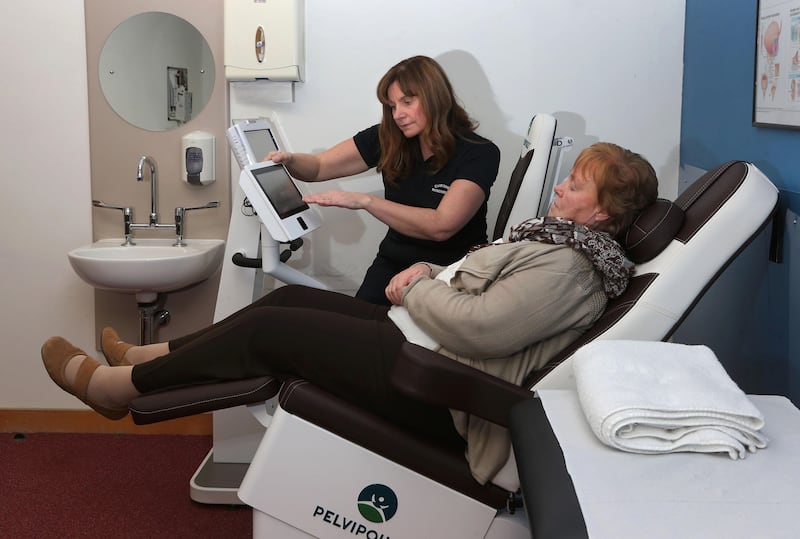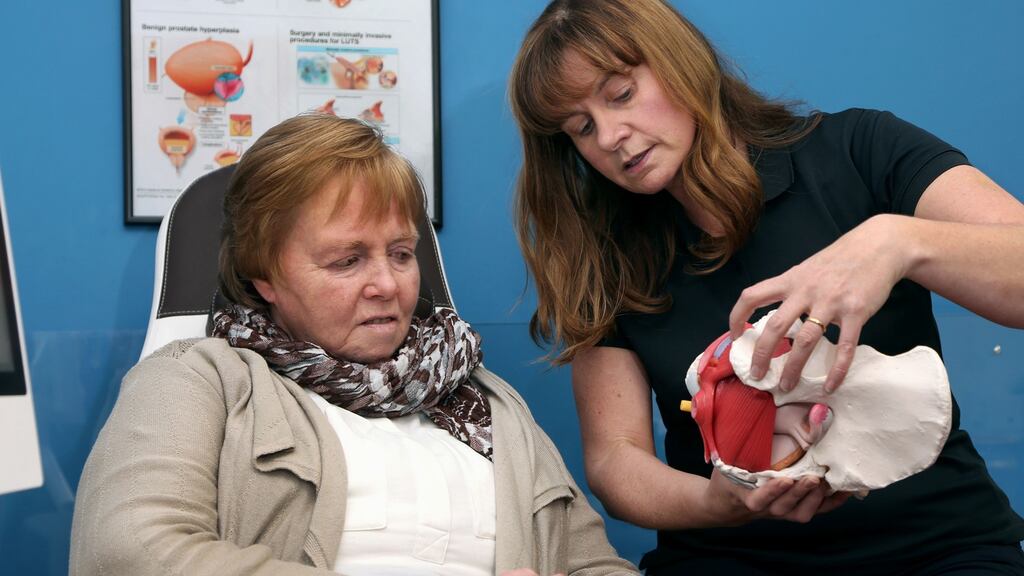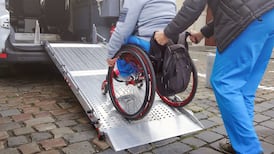It’s a condition that most people are too embarrassed to talk about, yet one that affects one in three women and one in nine men, and costs the HSE €100 million every year.
Urinary Incontinence (UI) can have a hugely negative impact on a person’s quality of life, mood and confidence with some sufferers becoming virtual prisoners in their own homes.
Research has shown that UI symptoms are under-reported in primary care, due in part to a perception that it is an inevitable consequence of aging.
While one in seven older adults in Ireland experience UI, the condition does not discriminate where age is concerned and the number of younger people suffering is increasing.
Weakness of the pelvic floor muscles has long been identified as a cause of urinary incontinence. Pelvic floor muscle weakness is common after childbirth, and is also associated with age.
The treatment of incontinence and other pelvic disorders is based on strengthening the pelvic muscles in addition to lifestyle changes such as cutting out tea and coffee, losing weight and taking exercise. Some patients also require medication.

Traditional methods of strengthening the pelvic floor muscles have involved active participation by the patient in contracting muscles and often involve techniques that are intrusive and uncomfortable.
New research and advances in treatment have greatly improved treatment outcomes for bladder and bowel incontinence, prolapse and sexual dysfunction.
One new technology with a high success rate in treating UI and erectile dysfunction is currently being rolled out around Ireland. The PelviPower chair has already been introduced to facilities in Donegal, Galway and Limerick, and is being rolled out to Dublin, Cork, Kilkenny and Kildare this year.
Clinical physiotherapist at the Bon Secours Consultants Clinic in Galway, Aoife Ni Eochaidh, says that "continence and pelvic problems are very common and are awful, but treatment results are great. New research and advances in treatment and medical devices such as the PelviPower Chair have greatly improved treatment outcomes. Persevere with your treatment, results may be slow but normal function is achievable with a 75 per cent or greater cure rate.
“The patient sits on the chair in their normal clothes and the machine does all the muscle stimulating work. Treatment takes 15 minutes once a week for five weeks which is much faster than other therapies which usually have to be done on a daily basis five days a week.”
Physios have been using electrotherapy since the 1950s to train very weak pelvic floor muscles, explains Ni Eochaidh. However some of these therapies can be quite invasive and uncomfortable for patients involving needle electrodes placed in the body or indwelling probes in the back passage.
Ni Eochaigh points out that the PelviPower therapy is not suitable for everybody, eg patients with metal hip replacements or pacemakers as it uses electromagnetic stimulation.
The therapy is not cheap with physiotherapy varying from €80 to €100 per session and treatment required once a week for five weeks, and a number of follow-up sessions. Some of the cost is covered by health insurance.
Electrotherapy is used in conjunction with pelvic floor muscle training programmes, explains Ni Eochaidh, which she stresses is not a quick fix.
“The European and Nice guidelines state it takes three to six months to fully train the pelvic floor muscles and this should be supervised by a specialist for six to 12 weeks. We work very closely with the consultant urologist and nurse specialist. Gone are the days when you gave the patient a sheet of exercises and sent them off. It’s like running a marathon, you need to train the muscles, making the exercises harder as you progress.”
Many of her patients have a combination of stress incontinence – leaking of urine when they cough, sneeze, exercise or lift something heavy – and urge incontinence – a sudden intense urge to urinate followed by involuntary loss of urine.
“Unfortunately the statistics show that people leave it until they are really bad before they come for help. People don’t like to admit they have incontinence, it’s taboo. And health professionals are not good at asking. They need to ask their patients about any bowel or bladder dysfunction and give them time to tell. It’s never too late, a 100-year-old muscle can be trained. I see patients from the age of four to 100, age is not a barrier to treatment.”
Ni Eochaidh, who is the Pelvic Obstetric and Gynaecological Physiotherapy rep for Ireland, advises patients to try more conservative therapies before rushing into surgery for incontinence and prolapse amid calls in the UK to ban controversial vaginal mesh operations as a routine treatment.
Types of urinary incontinence
The loss of bladder control ranges in severity from occasional leaking (particularly when sneezing or coughing) to not having reasonable time to get to a toilet in time.
Stress incontinence
Urine leaks when you exert extra sudden pressure on your bladder, eg by coughing, sneezing, laughing or exercising. The amount of urine passed is usually small.
Urge incontinence
You have a sudden and intense urge to urinate and you are unable to prevent the immediate loss of urine. Often occurs as part of group of symptoms called overactive bladder syndrome. Sometimes also means you need to get up several times during the night to urinate.
Overflow incontinence
Also called chronic urinary retention, occurs when the bladder cannot completely empty when you pass urine. You experience frequent or constant dribbling of urine.
Functional incontinence
A physical or mental impairment keeps you from making it to the toilet in time.
Total incontinence
Urinary incontinence that's severe and continuous.
Mixed incontinence
You experience more than one type of urinary incontinence.











